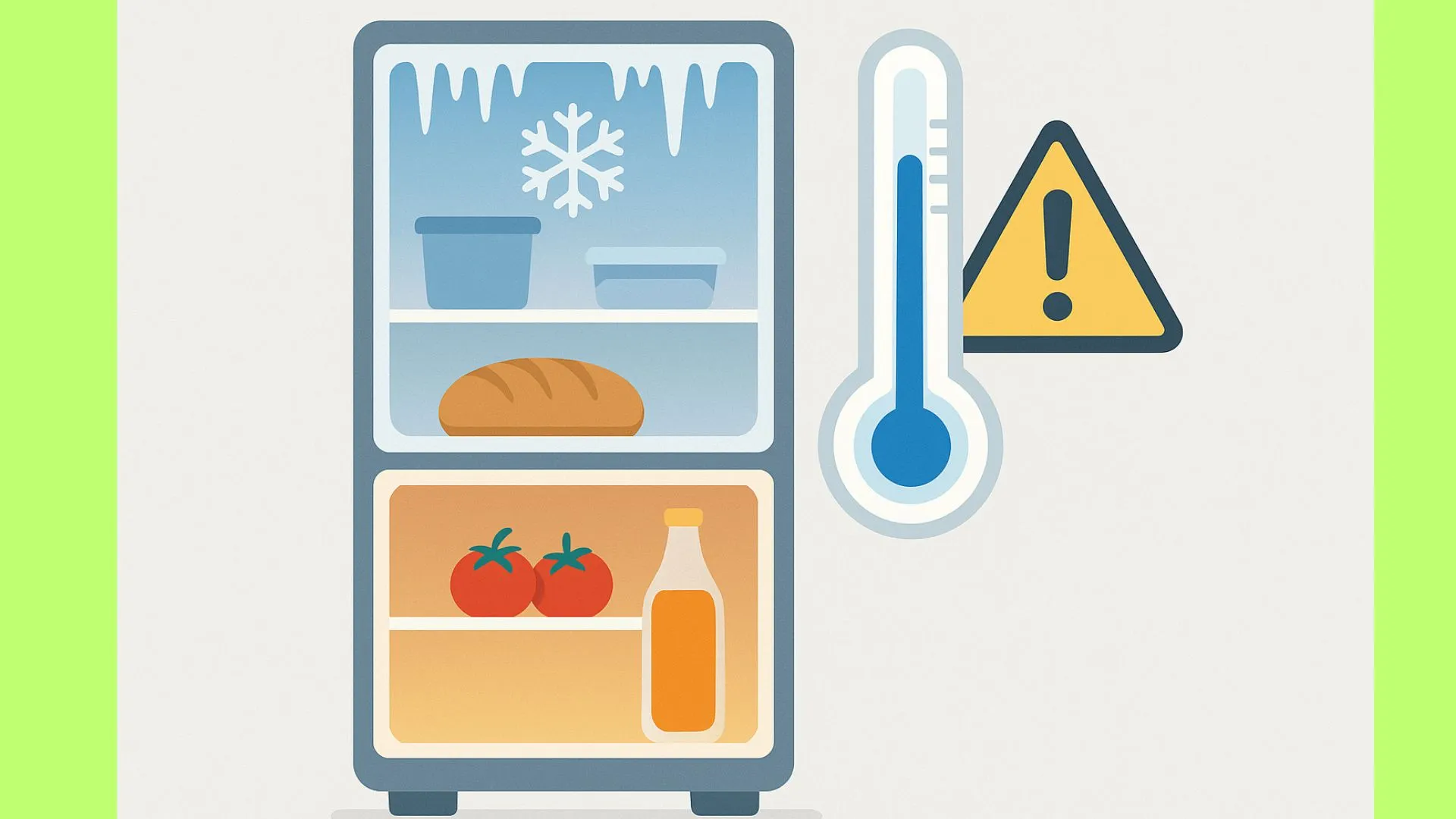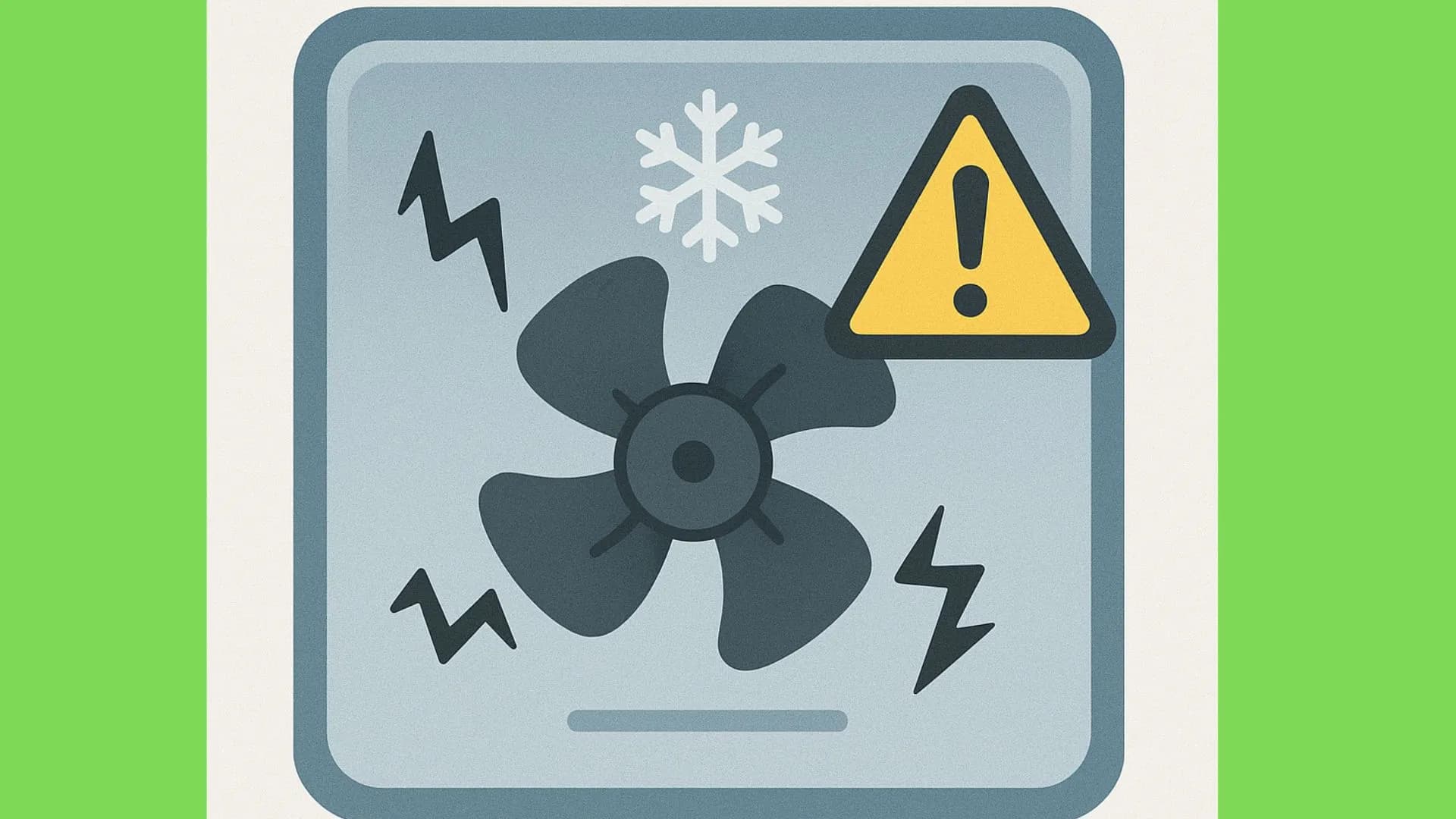Why isn't the bottom part of my refrigerator cooling?
Discover why the bottom of your refrigerator isn't cooling properly, the most common causes, and how to fix it step by step to keep your food fresh.

It's common for many users to wonder why the lower part of their refrigerator isn't cooling. This can affect proper food preservation and lead to waste. Understanding the reasons behind this problem is key to taking corrective action and extending the appliance's lifespan.
When the lower part of the refrigerator isn't cooling, it's usually due to a problem with the air circulation system or specific components like the fan or thermostat. The advantage of detecting this problem early is that it prevents food from spoiling and avoids increased energy consumption caused by the motor working harder.
Definition and function of the lower part of the refrigerator
The lower part of the refrigerator usually corresponds to the vegetable compartment or the freezer in some models. Its main function is to maintain suitable temperatures to prolong freshness and prevent bacterial growth. As a writer with experience in appliance technical matters, I can confirm that proper cooling in this area is vital for the overall performance of the appliance.
This area relies on a ventilation system that distributes the cold air generated by the evaporator, so any obstruction or malfunction can prevent the cold air from reaching the area properly.
Common signs or symptoms
- High temperature at the bottom: This may be due to poor air circulation and causes rapid food spoilage.
- Accumulation of moisture or frost: indicates problems in the defrosting system that affect cooling.
- Abnormal fan noise: suggests that the fan is damaged or blocked, preventing the distribution of cool air.
Common causes
Cause 1: Obstruction in the air outlets
Cold air should circulate freely to the lower part of the refrigerator. If the air vents or ducts are blocked by food or ice, the cold air won't reach them properly. To check for this, look for a buildup of objects or frost on the interior shelves.
Cause 2: Defective fan

The fan is responsible for circulating cold air inside the refrigerator. If it's not working properly, the lower part won't get the necessary cooling. You can identify the problem by listening to see if the fan is spinning or if there are any unusual noises when it's running.
Cause 3: Thermostat incorrectly calibrated or damaged
A thermostat that doesn't regulate the temperature properly can cause the refrigerator to cool unevenly. To check this, see if the indicated temperature matches the actual temperature using an external thermometer.
Cause 4: Refrigerant gas leaks
If there's a leak in the cooling system, the amount of cooling gas decreases, particularly affecting areas farther from the engine. A qualified technician can detect this problem using specialized tools.
Cause 5: Problems in the automatic defrost system
If the system doesn't defrost the accumulated ice, it can block the flow of cold air to the lower part of the unit. Check for excessive frost on the evaporator or interior walls.
Step-by-step (safe) solutions
Before starting any repairs, disconnect the refrigerator from the electrical supply to avoid accidents.
- Step 1: Cleaning air vents - use a damp cloth and a small brush to remove blockages and ice, spending about 15 minutes.
- Step 2: Fan Check - Open the inner panel to see if the fan is running when you turn on the refrigerator; if it is not spinning, it may need replacing.
- Step 3: Thermostat check - adjust the temperature to a medium level and check with a thermometer; if it does not respond, contact a professional.
When you detect problems with the refrigerant gas or the defrosting system, it is advisable to call a certified technician to avoid further damage.
Quick alternatives
- Option A: Using external fans to improve air circulation - is a temporary solution that may help, but does not solve the underlying problem.
- Option B: Adjusting the temperature to lower levels - may increase energy consumption and does not guarantee uniform cooling.
Common mistakes to avoid
- Do not unplug the refrigerator before cleaning or checking components, as this can be dangerous.
- Blocking air vents with food or containers prevents proper cold air circulation.
- Ignoring signs of noise or frost can worsen the problem and increase the cost of repair.
Preventive maintenance (checklist)
- Clean the grilles and air outlets - every 1-2 months.
- Check the fan and remove dust - every 6 months.
- Check the thermostat and adjust if necessary - every 3 months.
Frequently Asked Questions
Why does the top part cool but the bottom part doesn't? The distribution of cool air may be blocked, or the fan may not be working properly.
Can I defrost the refrigerator to fix this problem? Yes, defrosting can remove the frost that's blocking airflow.
When is it necessary to call a technician? If the problem persists after cleaning and adjusting the temperature, or if you suspect gas leaks or electrical faults.
Resources and references
- Official manufacturer's manual (check according to make and model).
- Household appliance maintenance guide from the National Consumer Institute.
summary
Insufficient cooling in the lower part of the refrigerator can be due to various causes, such as blockages, fan failure, or thermostat problems. Identifying and resolving these issues promptly helps preserve food and avoid unnecessary expenses. To keep your refrigerator in optimal condition, follow the tips and preventative maintenance described. Don't hesitate to contact a professional if the repair requires advanced technical knowledge.
Is your refrigerator not cooling properly? Start today with a basic cleaning and check-up to restore it to good working order.